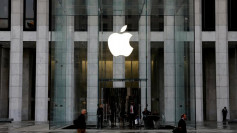OpenAI has officially launched Sora, its groundbreaking text-to-video generation tool, marking a significant leap in generative AI capabilities. The much-anticipated release, announced on Monday, allows users to create high-definition video clips simply by typing prompts. This innovative technology mirrors the functionality of OpenAI's popular image-generation tool, DALL-E, and expands the potential of AI-assisted creativity into video production.
The tool is initially available in the U.S. and numerous international markets, with OpenAI confirming that it will be integrated into existing ChatGPT Plus and Pro subscriptions at no additional cost. Users can generate videos of up to 20 seconds in resolutions up to 1080p and experiment with advanced features like blending multiple scenes and creating seamless loops. While access in Europe and the U.K. has been delayed due to regulatory considerations, Sora is expected to gain traction rapidly as users explore its possibilities across industries.
Sora has been in development since its announcement in February and was tested extensively by a select group of artists and safety experts. These testers provided feedback on potential vulnerabilities related to misinformation and bias. OpenAI's leadership emphasized that while Sora offers unprecedented creative potential, it also carries responsibilities. Rohan Sahai, the product lead for Sora, stated during a livestream event that OpenAI aims to balance creative freedom with robust safeguards to prevent misuse.
The tool's release comes amid growing competition in the generative AI market, with companies like Google, Meta, and Amazon also unveiling text-to-video technologies. These advancements have been met with both excitement and concern. While they promise to revolutionize industries such as media, advertising, and entertainment, they have also sparked debates about their impact on intellectual property and labor dynamics.
The rollout of Sora coincides with increased scrutiny of OpenAI's practices. In November, a group of early testers leaked access to the tool, accusing the company of exploiting artists for unpaid labor. The group criticized OpenAI's approach as prioritizing public relations over meaningful artist collaboration. In response, OpenAI highlighted the voluntary nature of participation and reiterated its commitment to supporting the arts through grants and other initiatives.
The implications of Sora for the entertainment industry are profound. As production costs continue to rise, AI tools like Sora offer potential solutions by streamlining processes in visual effects and animation. However, industry surveys have highlighted concerns about job displacement, particularly for roles such as sound engineers and concept artists. Despite these challenges, some creators view AI as a tool to enhance rather than replace human creativity.
OpenAI's aggressive expansion into video generation aligns with its broader ambitions to dominate the generative AI sector, a market projected to exceed $1 trillion in revenue within the next decade. The company recently secured $157 billion in funding, positioning it as a leader in the race to integrate AI across text, image, and video platforms.




